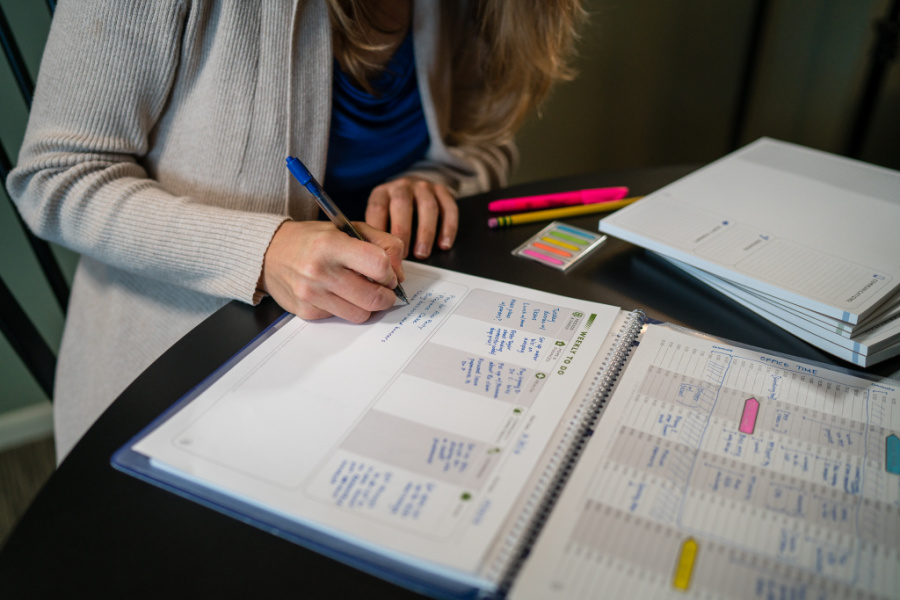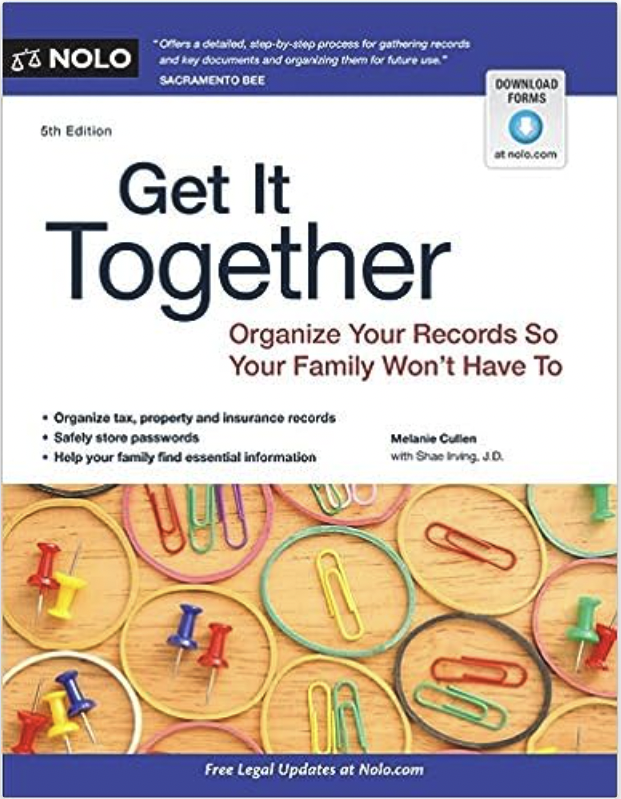Last month we announced a new service for college students, helping them with their Set Up Success college planners. In response to that announcement, a dear woman I know emailed me and asked, “What about executive function support for older brains?”
Oh yes…the senior brain. I know it too well. I just turned 70. Both my body and brain have really started to change (sigh).
I have worked with many older brains over the years, which has helped me to be aware of the growing limitations of an aging brain and its increasing executive function challenges. That experience is helping me to have compassion for my aging self and my dear aging husband. As a result, I am doubling down on external support tools to help us with our executive function weaknesses.
As I thought about this topic, I realized that I could develop a whole course for helping elders with executive functions! Since this blog has a deadline, I need to be more succinct.
This key executive function of Working Memory is the one that gives older people the most problems. We forget things – lots of things! Sometimes I tell myself, “Marydee, you have the working memory capacity of a kumquat.” Many of us simply can’t count on our brains to track everything that needs doing. We need to write things down – in multiple places – to stay aware of time and tasks. Here are the supports we need to help our working memory as we age:
Paper Calendars Make Time Visible
Place a calendar in a location that is easily accessible and visible. Write down things like doctor appointments, social events and travel. That calendar is the 10,000 ft view of your life. Not a lot of detail, just the big picture of what is coming up. At a glance, you will get reminders of upcoming commitments. I like this erasable 12-month calendar, but if that is too over the top for you, go for whatever style you like, so long as it’s easy to read.
A Paper Planner Supports the Brain
You need a planner with a large two-page monthly calendar spread. This is where you write down all of your commitments and those of your family members too. Be sure to take it with you to doctor appointments! Include your contact information, just in case it gets misplaced.
At home, keep it in one location, so you can find it easily for planning your week and day. I think of my paper planner as my external brain. My Seeing My Time Adult Planner System is a great option. It includes a two-month spread, plus day, week and appointment forms to fill out and place in the front for easy visual reminders.

Whiteboards for Jotting Things Down
Whiteboards are a great tool in the kitchen or anywhere you spend a lot of time each day. They are wonderful for capturing those spontaneous to-dos that pop into your brain and you think, “Oh, I don’t want to forget to do this.”
We have a small one on the refrigerator for tracking food and household items that need to be included on the next shopping list. My husband and I have personal whiteboards for tasks that may not be urgent, but we need to remember to do them. You can find a few options linked on my Cool Tools page.
Day Plans Keep Your Goals in Sight
Make a ritual of writing down your goals for the day. Perhaps you do it with morning tea or coffee. Keep the list SHORT. That makes it achievable. Remember to cross off tasks when you do them. That makes your brain feel good and motivates you to tackle the next item on your list.
One of my senior clients told me that without the visual of a crossed-off list, she feels like she hasn’t done anything all day long. The list is proof that she accomplished something! Your brain needs that reward.
Record Information for the Future
This is about supporting long-term memory for future recall. Aging brains struggle with the recall of information. We need ways to get quick access when we need it and, sadly, the computer isn’t such a friendly place for aging brains. So I recommend binders with Avery Big Tab Binder Dividers for the following:
Medical/Insurance Information:
If you have complicated medical issues, create a binder that stores notes from your various doctors along with medications. Take it with you to appointments to keep it up to date. Include notebook paper so you can write down issues you want to discuss with your doctor. You should also write down what they tell you to do next. You may need an additional binder for insurance information.
 Financial Information:
Financial Information:
For peace of mind, I highly recommend this workbook: Get It Together: Organize Your Records So Your Family Won’t Have To. It is a place to record all of the information that you or your family will someday need to access connected to finances and your home. It takes a bit of effort to fill it out because you may need to hunt down things like account numbers. Just do a page at a time and then celebrate each completion. Trust me, it feels so good to look at that binder knowing that it will help both me and my children in the future.
Special Interests and Hobbies:
I have a binder in which I keep a record each year of all of the food I preserve, things like jams, pickles, and salsas. I include the number of jars each recipe made, any special ingredient that is needed, and most importantly where can I find the recipe next year so I can remake favorites. I also have a binder and planner just for vegetable gardening. I find this easier and more efficient than using the fancy garden planner on my computer.
Well, I just noticed that this blog has passed my word limit, so I guess I’ll have to come back to this elder topic another month to talk about the “stuff” that we have collected over our lifetimes and its impact on our brains.
Remember, have compassion for your wonderful, hard-working aging brain. It’s perfect as is – it just needs some external support.
Marydee


I am exactly your age, Marydee! Every week I get my weekly See My Time Visually sheets out and fill them out. I use them daily, along with my phone calendar for my husband and me to sync:) thank you!
Hi Kathy! Great to see your comment. Sorry to be so late in responding! I forget to check the backend of the website to see the comments. Out of sight…
So happy that the planner is helping you out. Keep using it and we will rock into our 80’s and beyond!